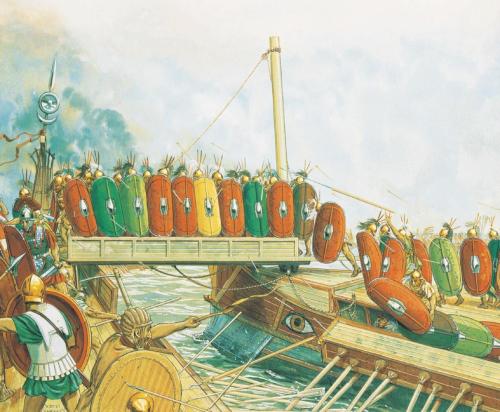Republication from the Archaeology Magazine

Roman legionaries board on a Carthaginian warship during the First Punic War. Artwork by Peter Connolly.
by Andrew Curry
Evidence of Romes decisive victory over Carthage is discovered in the waters off Sicily
In his work The Histories, the second-century B.C. Greek historian Polybius chronicles the rise of the Romans as they battled for control of the Mediterranean. The central struggle pits the Romans against their archenemies the Carthaginians, a trading superpower based in North Africa. For 23 years, beginning in 264 B.C., the two rivals fought what became known as the First Punic War.







